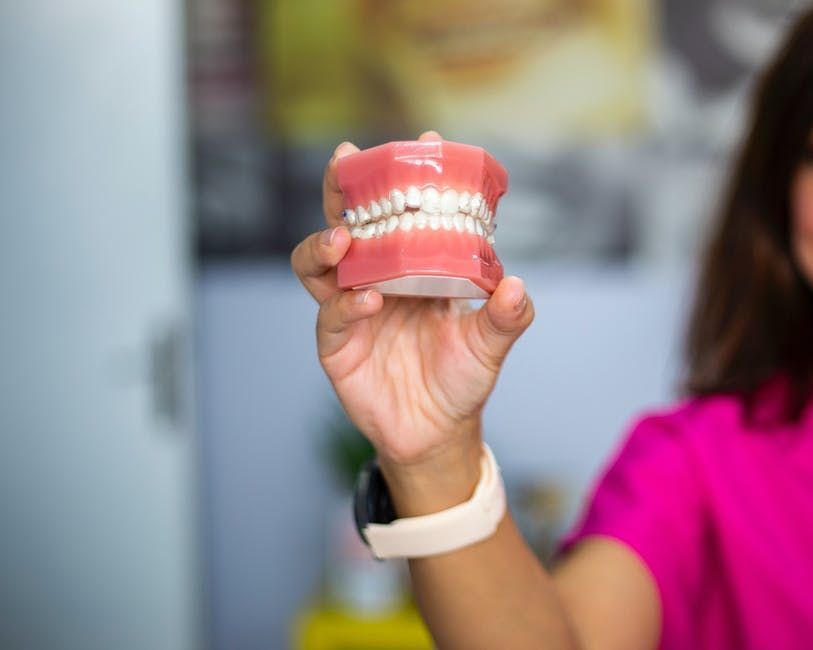Veneers vs. Bonding: Which Cosmetic Treatment Is Right for You?
Did you know that 76% of people base first impressions on one's smile (Ortho Practice USA)? Yet, many are unhappy with their teeth. Fortunately, cosmetic dentistry offers solutions to enhance your smile.
Two popular options are veneers and bonding. Understanding the differences between these treatments is essential to determine which is right for you.
In this article, we will dig into veneers vs. bonding, helping you decide to achieve the smile you have always desired. Let us get started!
What Are Veneers?
Veneers are thin shells that cover the front surface of your teeth. They are typically made from porcelain or composite resin, offering a durable and natural-looking finish. Dentists use veneers to correct dental imperfections, from chips to uneven teeth.
The application involves reshaping the tooth by removing a small layer of enamel. Once bonded, veneers create a flawless, uniform appearance.
Advantages of veneers include:
- Long-lasting results
- Stain-resistant materials
- Customizable for each smile
Considerations:
- Higher cost compared to bonding
- Requires enamel removal
- Permanent Choice
Veneers excel for those seeking a dramatic smile makeover. They can transform even severely damaged or stained teeth into a perfect set. However, due to their permanence, the commitment is significant.
If you are looking for an option that offers durability and a polished, natural look, veneers may be your solution. While they require an upfront investment, the long-term results are worth it. Many turn to veneers for a complete cosmetic overhaul that balances aesthetics and function beautifully.
What Is Bonding?
Bonding for teeth is a quick and versatile way to fix minor dental imperfections. It involves applying a tooth-colored resin to the tooth, which is then hardened with a special light. Bonding can address chips, gaps, or slight discoloration.
Benefits of bonding include:
- Cost-effective solution
- No enamel removal
- Quick and painless
Limitations:
- May stain over time
- Less durable than veneers
- Best for minor fixes
Bonding is ideal for those wanting fast and affordable cosmetic dentistry. The process can often be completed in a single visit, making it convenient.
This treatment works best for patients seeking subtle dental enhancements without extensive procedures. For those with minimal damage, bonding provides an accessible entry point into cosmetic dentistry. It is also great for anyone who prefers a less permanent approach to their smile makeover.
Comparing Costs and Durability
Cost and longevity are key factors when choosing between veneers and bonding as forms of cosmetic dentistry. Veneers often have a higher price tag but deliver superior durability. Bonding is more budget-friendly but requires more frequent touch-ups.
Veneers:
- It can last 10-15 years
- Resist stains effectively
- Higher initial cost
Bonding:
- It lasts around 3-5 years
- Susceptible to staining
- Affordable and accessible
Veneers are designed to withstand wear and tear, making them a smart choice for those seeking long-lasting results. While less durable, bonding is an excellent option for minor repairs or those on a tighter budget.
Think long-term when considering veneers; the investment often pays off with years of confidence. For bonding, focus on immediate needs and the simplicity of the process. Both options cater to different priorities, so weighing the pros and cons is essential for the right decision.
How Do Veneers and Bonding Affect Appearance?
When transforming your smile, veneers and bonding offer unique benefits. Veneers provide a Hollywood-level makeover, while bonding delivers subtle, natural enhancements.
Veneers are custom-made to match your teeth, ensuring a seamless fit. They excel at creating a uniform look and correcting severe discoloration, uneven spacing, or oddly shaped teeth. Bonding focuses on minor imperfections, like chips or slight gaps, blending in with natural teeth.
Key appearance factors to consider:
- Veneers offer a flawless finish
- Bonding works best for minor tweaks
- Veneers resist staining better
Veneers are ideal for dramatic change and provide a pristine, camera-ready smile. Bonding, however, is perfect for those seeking natural quick fixes. Both can transform your appearance, but veneers tend to make a bolder statement.
Veneers are the top choice if you want a comprehensive smile makeover. Bonding offers a simpler, cost-effective route for minor issues. Ultimately, the right choice depends on how you envision your perfect smile.
Maintenance and Longevity
The care and lifespan of veneers and bonding differ significantly. Both require good oral hygiene, but veneers demand less ongoing maintenance due to their durability.
With proper care, veneers may last up to 15 years. Their stain-resistant material keeps them looking fresh over time. Bonding, however, is more prone to wear and discoloration, requiring touch-ups every few years.
Maintenance tips for both treatments:
- Brush and floss daily
- Avoid biting hard objects
- Schedule regular dental visits
Veneers are the standout option for long-lasting results. Their sturdiness and resistance to damage make them a low-maintenance solution. Bonding suits those looking for quick results but requires more frequent upkeep.
Choosing between veneers and bonding depends on your lifestyle and willingness to maintain your dental enhancements. Veneers often prove to be a better investment for a long-term smile upgrade, while bonding remains a practical choice for minor, short-term fixes.
Which Option Fits Your Lifestyle?
Your lifestyle plays a significant role in deciding between veneers and bonding. If you need a long-lasting, low-maintenance solution, veneers are the better fit. They suit busy individuals who want durable results without frequent dental visits.
Bonding works well for those who prefer a less permanent option. It is ideal for quick fixes and smaller budgets, especially if you are open to occasional touch-ups.
Both treatments enhance your smile, but your daily habits and long-term goals should guide your decision. Whether you prioritize convenience or cost, there is a cosmetic solution tailored to your needs.
Veneers vs. Bonding: Making the Right Choice
Veneers and bonding are two fantastic ways to enhance your smile, but the right choice depends on your needs. Both treatments can improve your confidence and help you achieve the smile makeover you have always wanted.
Transform your smile with Core Dentistry, where exceptional care meets a personal touch. From cosmetic dentistry like veneers and bonding to comprehensive family dental services, we are here to serve Fort Mill with expertise and compassion. Please
get in touch to experience a practice that treats you like family and keeps your oral health a top priority!











